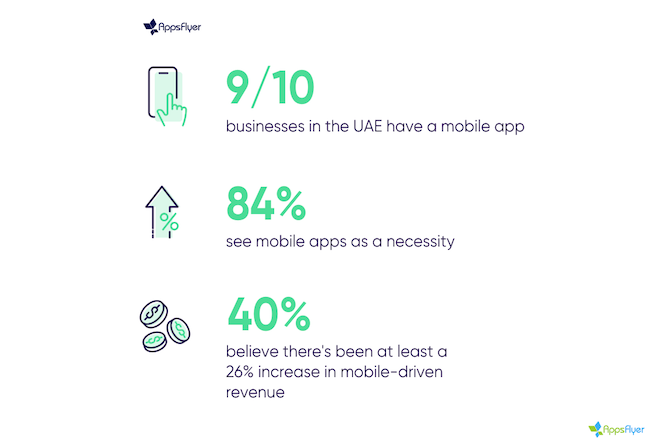
As the world moves in a more digital direction, socialising, banking, shopping, and a host of other activities are now more likely to be conducted online rather than in-person. Consequently, apps are becoming the primary interface between consumers and businesses. According to a study from AppsFlyer and 451 Research, 91% of UAE businesses currently offer a mobile app and 84% now regard them as necessary. At least 40% have experienced an increase in mobile-driven revenues of 26% or more since the last quarter of 2020.
With mobile apps becoming a key consumer touchpoint, directly driving the bottom line for businesses, the app landscape is more competitive than ever. Businesses of all sizes and industries must now compete for the most prized pieces of digital real-estate — their customers’ smartphone screens.
But even when an enterprise has an app ready to launch, there is one question that still needs to be answered: how will customers find it? In 2022, having surmised the obvious — that downloads can only occur when people know an app exists — the region’s stakeholders must turn to app-store optimisation (ASO). This is SEO for mobile apps and focuses on optimising visibility to increase conversion rates. As with SEO, ASO is nuanced, and the six tactics below can help get your app ahead of the pack.
1 Keyword research
This has always been something of a dark art. Covering every keyword that is relevant to your business is impractical, if not impossible. Instead, think about your customers. What are their needs, and what words tie those needs to the unique value your app provides?
Think in terms of the problems potential users face. What are the biggest ones? What is the unique selling proposition (USP) of your app? What does it do, and why have you chosen to design it that way? Consider the principal demographics and most passionate interests of your users. Is your app for gamers or customers of your bank, grocery store, or restaurant? Think of geography. Where are your potential users when they are searching for your app (city, country, region; or office, cinema, commute), and where do you envisage them being when they are using it? And what are they trying to accomplish when using it?
2 Paid user-acquisition
We speak of user acquisition (UA) as the marketing toolbox we leverage to drive new users to apps. When choosing to pay for UA, various channels — such as Facebook or Instagram — can be effective depending on your target audience. Instagram, for example, is the fourth most used social site, and downloading apps through its pages is relatively seamless. Facebook’s advertising capabilities are also sophisticated. Advertisers can click on “App Installs” and experiment with different CTAs, including “install now”, “download”, and “learn more”.
3 Mobile ad networks
Ad networks are a useful way for advertisers to find publishers who monetise their own apps by hosting ads, including those for other apps. The AppsFlyer Performance Index is one trusted way to evaluate ad networks and the extent to which they have proven themselves effective for mobile advertisers.
4 Direct app store ads
The best possible prospect for a salesperson is a consumer that is already in the market for a product that fits the USPs of the one offered by the salesperson. If app producers advertise on an app marketplace, in a static placement or in targeted search results, they are getting their brand in the eye line of users that are actively looking to download.
5 Social media influencers
The influencer economy is still heating up, but some reports suggest as many as 40% of Twitter users, for example, have made a purchase on the tweeted advice of an influencer. This could be a lucrative avenue for the many regional start-ups who are eager to get the word out about their app. Promo codes and referral codes can be used to incentivise micro-influencers to become part of your app’s story, as they are also in start-up mode. They will drive the creative side of the messaging so they can maintain their own personality, but your marketing team will shape the message content through formal guidelines.
6 Charts and ‘discover’ pages
Major app stores always have pages to feature apps — top free apps, top paid-for apps, top utility apps, top games, and more. Millions of users entering the store see these apps first, and those users are normally ready to download. In some marketplaces, like Apple’s App Store, staff editors highlight apps and provide supporting content such as interviews with developers and users.
Apple has seven metrics it uses to consider an app for its Discover section: interface design, user experience, innovation, uniqueness, accessibility, localization, and the look and feel of the app’s App Store product page. Not easy hurdles to clear, but with the right design, marketing, and coding teams, anything is possible.
User longevity
Downloads are just the first stage. Many other metrics apply to the monetisation of your app. You need users to use it. Frequently. While the innate usability and other qualities of the app may be important, so is the quality of the user. ASO best practice, which we have merely overviewed here, is not just about maximising downloads, it is about maximising engagement. After all, thousands of inactive users and dormant downloads will do little to benefit your business.









